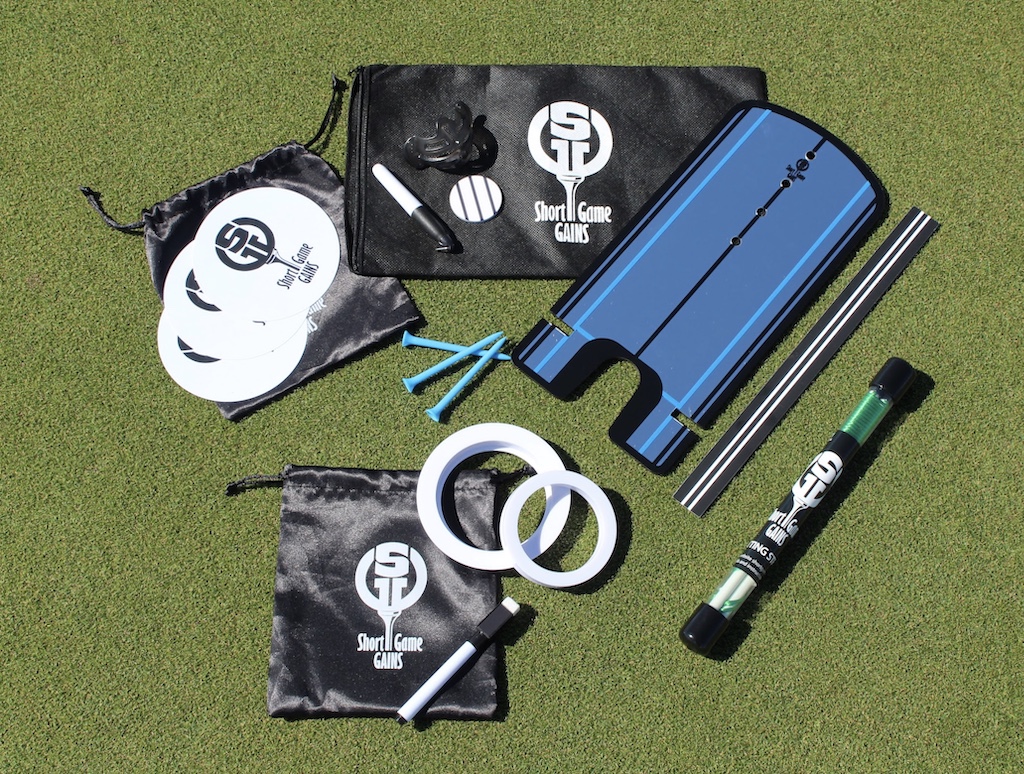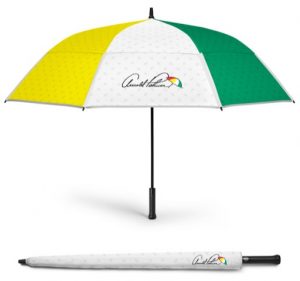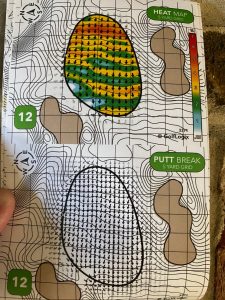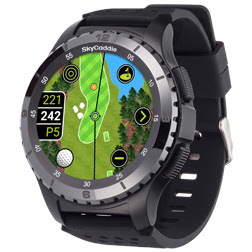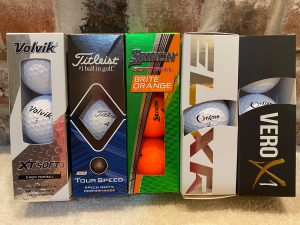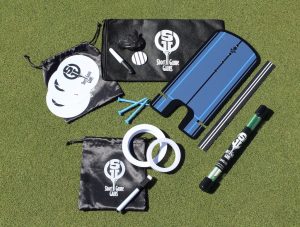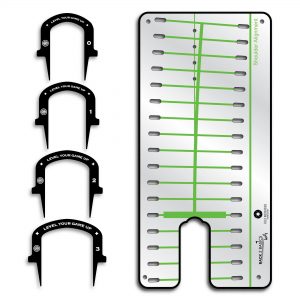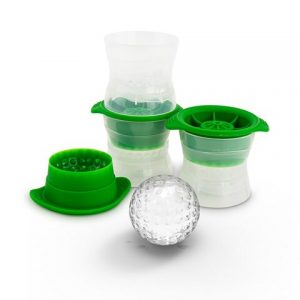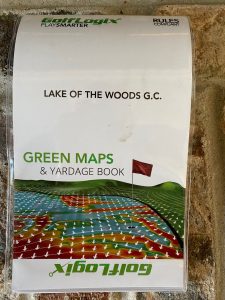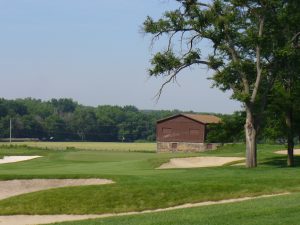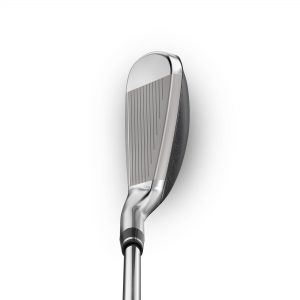If ever there was a holiday season for online shopping, it’s 2020. Most of us have been shopping online since March, but now we’ve hit the big time. This is The Show, baby! So step up to the tee and let the big dog eat!
Here’s a list of my favorite golf gifts this year. It’s pretty long, but what the heck else do you have to do?
Arnold Palmer Umbrellas by Weatherman
It’s been one dreary year, and when that hard rain falls – literally or figuratively – it’s nice to have a big ol’ umbrella. The Arnold Palmer Umbrella Collection by Weatherman offers shelter from the rain for everyone, golfers and non-golfers alike. The Arnold Palmer Classic Golf Umbrella ($89) has Arnie’s trademark pattern and measures 68”. That’s big enough to keep a threesome dry, if you like each other well enough and don’t need to socially distance.
ECCO Golf Street Retro shoes, PUMA IGNITE Caged Crafted shoes, & Swiftwick MAXUS Zero Tab socks
The saying goes that you can’t understand another person’s struggles unless you walk a mile in their shoes. Anyone who walks a mile in my new ECCO Golf Street Retro shoes ($150), though, isn’t going to feel very sorry for me. ECCO is the long-running champion in the “Most Comfortable Right Out of the Box” category, and the Street Retros are no exception. I wore mine for the first time a couple weekends ago—2 days in a row, walking 18 holes, and afterwards my feet felt like I’d had them up on the couch all day. Crafted with full-grain leather, waterproof, and with some 800 traction angles, these shoes perform, too. My favorite part is the textile, sort of felt-like collar that adds even more comfort around your ankle.
The PUMA IGNITE Caged Crafted shoes ($170) represent a solid entry into the “crossover” golf shoe category, that look both good on and off the course. They are constructed with a premium full grain leather PWRCAGE Saddle that wraps around the medial and lateral sides of the shoe providing incredible stability throughout the swing along with a 1-year waterproof guarantee, and a cool nuvo-classic look. Bryson DeChambeau and Gary Woodland have been wearing these beauties on Tour for the past year, so you know they perform at the same time they protect and pamper your feet.
Either the ECCO Retro Street or PUMA IGNITE Caged Crafted shoes pair nicely with the most comfortable sock in golf – the Swiftwick MAXUS Zero Tab ($15). These ankle socks come in a rainbow of colors, and they absorb sweat better than any sock I’ve ever worn. But the best feature is an enlarged microtab on the heel to make sure whatever shoes you wear won’t rub.
GolfLogix Greens Books, SkyCaddie LX5 GPS watch, & Bushnell Wingman
These days, it’s all about data: yardages, green books, stats tracking. You name it, you can quantify it. There are more options than ever this holiday season. GolfLogix offers green maps and yardage books of nearly any course you can think of. These books run $40 each, and they make outstanding gifts for golfers on your list—personalized for their home courses! They include hole maps on 50-yard scales and green break maps and heat maps on 5-yard grids. We’re talking serious data here. The hole maps are excellent, but the stars of the show are the exquisite green maps, with break arrows and heat maps for judging both direction AND amount of break.
If you want yardages and more in a sleek wearable unit—like hole maps, yardages to hazards, score-keeping and game stats, step-counter, heartrate monitor and more—you will want to consider the new SkyCaddie LX5 ($330, incl. a $20 holiday discount). The LX5 has a ceramic touch-screen bezel that measures 1.39 inches, with hi-def resolution so even old(er) guys like me can read the numbers on the screen. It comes with a 3-year SkyCaddie Premium membership and is pre-loaded with 35,000 courses around the world. The membership allows you to sync data (scores and stats for every hole that you enter during your round) with a laptop or phone, and then you can access stats from all your rounds on the www.SkyGolf360.com website. Added benefits are a step-counter, so I can show my wife that my morning rounds include 14,000 steps (6+ miles) and a battery that lasts for two full rounds.
If the golfer on your list likes to play tunes on the course the Bushnell Wingman ($150) is for you. Essentially the Wingman is a top-notch Bluetooth stereo speaker combined with one of the best GPS systems in golf. Integrated into the speaker is a powerful magnet so you can stick it on your golf cart (or on your pushcart), and there’s a detachable remote control you can keep in your pocket to click for audible yardages to the front, middle, and back of the green. Pair the Wingman with your phone to play music from your own library or streaming service, if the gentle strains of birdsong and the breeze in the leaves are too old-fashioned for you. Then download the Bushnell app onto your smartphone to display detailed maps and yardages of 36,000 courses, keep score, and more all on your phone.
Balls, balls everywhere
Is it just me, or has there been a recent proliferation of golf ball companies and models? Gone are the days when everyone in your group plays the same Titleist or TopFlite. Not only is there variety, there is quality, as engineers have figured out how to combine distance and control qualities in the same ball. Here are five current favs to choose from:
Volvik XT Soft ($37.99/doz)
Volvik is one of the most intriguing and fastest-growing brands of golf balls. They certainly win the “unique line-up” award. Volvik’s balls are widely played on the LPGA Tour, and the company sponsors the Long Drive Tour. The XT Soft model represents an affordable premium entry that received a Gold rating on Golf Digest’s “Best New Golf Balls” Hot List this year in the over $35 premium category.
Titleist Tour Speed ($39.99/doz)
MyGolfSpy.com has fabulous golf ball testing facilities and methods, and according to their crack staff, there’s a reason the ProV1 has dominated the golf ball market for so long: Titleist has some of, if not the, most stringent quality control in the golf ball world.
Titleist brings that same meticulousness to the production of their new Tour Speed balls.
The Tour Speed has a proprietary thermoplastic urethane cover and a 346 quadrilateral dipyramid dimple design that the company claims make it longer and faster than Callaway Chrome Soft, Bridgestone Tour B RX, TaylorMade Tour Response, Srixon Z-STAR and Srixon Q-STAR TOUR.
Srixon Soft Feel Brite ($21.99/doz)
If your absolute bottom line when it comes to golf balls is finding the best ball possible at the lowest price possible, Srixon Soft Feel has been your go-to for several years now. Are they the longest ball you will play? No. But do they combine competitive distance with excellent responsiveness around the greens? You bet they do. So if you tend to lose a lot of balls, you can stock up on these at basically 2-for-1 the price of “premium” balls.
OnCore ELIXR ($25.99/doz) and Vero X1 Prototype ($39.99/doz)
Buffalo-based OnCore Golf probably makes the best balls you’ve never heard of. The direct-to-consumer manufacturer has three models: Avant, ELIXR, and the brand-spanking new limited-edition prototype Vero X1. The ELIXR is a three-piece, value-priced premium ball that performs as well as or better than balls selling for $10 more per dozen. OnCore’s new premium four-piece, tour-caliber ball is the Vero X1. This ball also has the metal-infused mantle, 85 compression, and a premium cast urethane cover that in combination produce tremendous distance off the tee and spin around the green. I played the Vero X1 over two rounds in a recent tournament and experienced something I rarely, if ever, have before: backing the ball up on the greens. OnCore is having a buy 2 dozen get one free deal
Short Game Gains and Pro Path putting mirrors
Maybe you live in a house with vaulted ceilings so you can take full swings. Maybe you have one of those fancy indoor simulators. For those of us who aren’t in those categories, the best off-season practice we can do indoors is putting. And the best way to maximize putting practice—indoors or outdoors—is with a putting mirror. Here are two excellent options, each with its own unique features.
Pro golfers, social media butterflies, and sweethearts Hannah Gregg and Fredrik Lindblom have developed a line of products based on the tools and tricks of their fellow Symetra and Korn Ferry Tour players and named their company Short Game Gains. All of their training aids are simple and intuitive to use, yet sophisticated in design and high-quality in construction. Their putting mirror ($40) is compact, and the plastic “runway” that you can use with it is particularly helpful for getting the ball started online. Their set of “ghost holes” ($15) is particularly useful for dialing in speed, as they allow you to gauge how far past the hole your ball is running. Their hole reducers ($18) are one of the cleverest putting aids I’ve ever used. The concentric hole inserts reduce the diameter of holes on your local putting green to dial in your aim. Practice a while with these, and when you hit the course, the standard-sized holes feel like buckets. Everything comes in its own cinch-sack for easy transport. You can grab all of these aids along with a few others for $90 – and your short game will emerge from this pandemic tastier than your sourdough loaves.
The Pro Path putting mirror by Back 2 Basics Golf ($65) is a bit larger than the one by Short Game Gains, with more detailed graphics printed on it. I especially like the stroke-path line, which helps you groove a bit of a closed-open-closed stroke on longer putts. The mirror also comes in its own carrying sack, and it includes four staggered putting gates that you can stick into your local putting green to narrow your aim and ensure you hit hour line every time. Happily, both of these mirrors work just as well on your livingroom carpet as they do on a practice green.
Man Crates and Canteen Vodka & Soda
Pandemic, you say? Lockdown, you say? Well I say it’s a perfect opportunity to indulge your passions or take up a new hobby. Especially a manly one. Man Crates are care packages for the men OR women on your gift list. Crates contain a variety of goodies centered around various themes, from whiskey-lovers to baking to beef jerky to BBQ to knife-making to ales to personalized golf balls ($50-$150). I love to cook, but I’m not much of a baker. So when my Get Baked crate ($60) arrived, I was skeptical. Then I read the instructions and threw together a blueberry crumble that wowed my family and me, and then I started in on the iron skillet desserts. I guess I’m a baker now!
Whether you enjoy libations on the golf course or only after you hit the 19th hole, something light is generally the way to go. Seltzers have become surprisingly popular, even amongst the older golfing set. But if you are looking for something light with more substance and flavor than your typical seltzer, I highly recommend Canteen Vodka and Soda. These canned 5% alcohol drinks—made with real vodka, rather than the beer-like fermented cane sugar found in most seltzers—make those seltzers taste like bad mineral water. The Canteen flavors are perfectly calibrated, with no aftertaste. They were my Official Drink of the November Masters.
Tovolo Golf Ball Ice Molds
Dress up your Canteen drinks or your Man Crate whiskey with large golf ball-shaped ice spheres with the Tovolo ice molds ($15 for set of 3). These latex molds are easy to fill and, with a little practice, you create bubble-free balls that cool immediately and melt very slowly.
If you can’t find something in the list above for the golfers on your gifts lists, I’m not sure what to say. Maybe you’ve contracted the virus, because you’ve obviously lost your taste.
Seriously, may everyone be well, stay hopeful, and be surrounded with love and laughter this holiday season. 2021 has got to be better, right?
–Peace–

